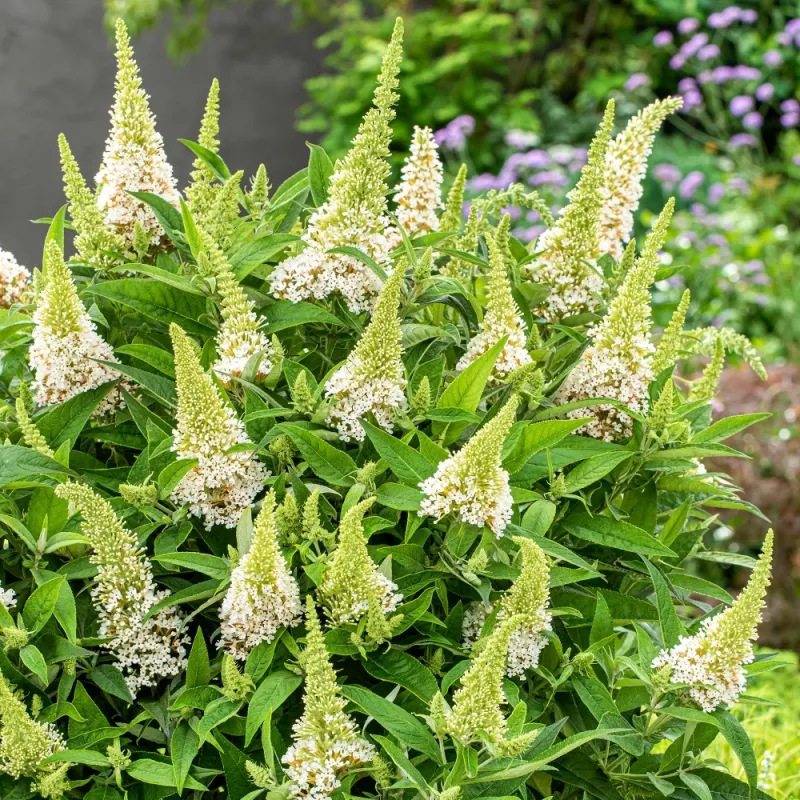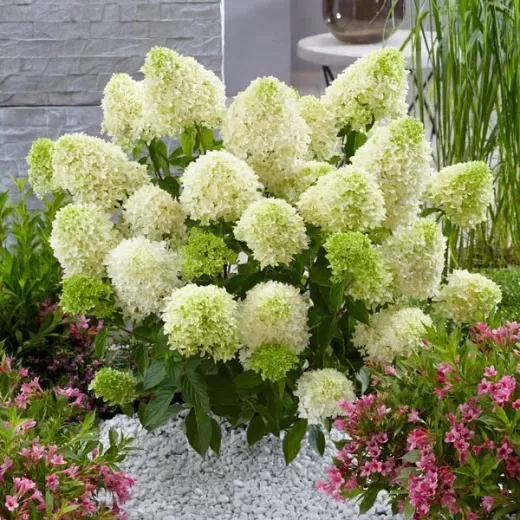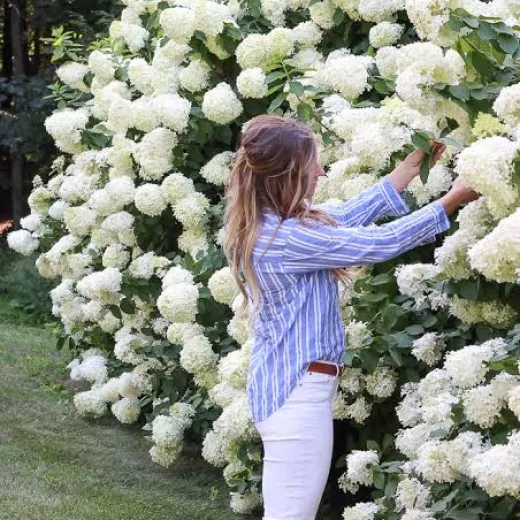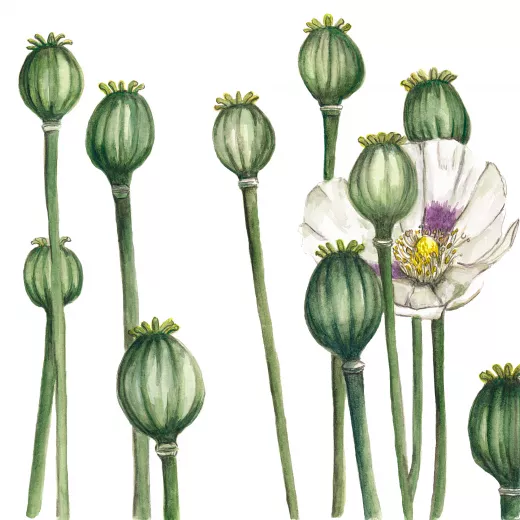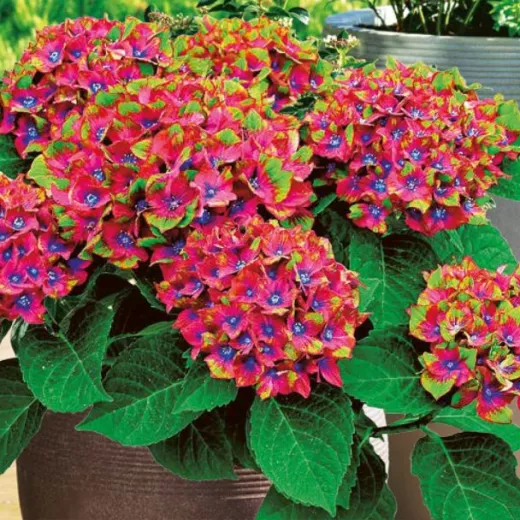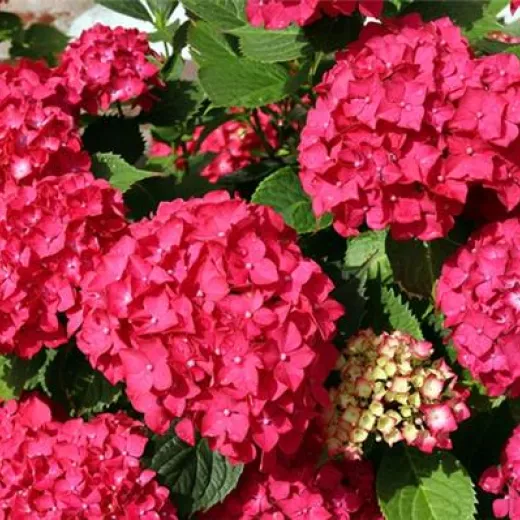Quick Facts
| Flower Type | Buddleja |
|---|---|
| Flower Colour | White |
| Planting Time | Hardy buddlejas can be planted at any time of year, but you'll need to water them well if you plant them in summer in full leaf. Planting in spring is ideal as the warm, moist conditions will help them establish. |
| Watering | PLEASE REFER TO THE TOP TIPS FIELD FOR MORE INFORMATION |
| Life Cycle | Herbaceous Perennials |
Buddleja Davidii Little White: 14cm Plant
Buddleia, commonly referred to as butterfly bush, is a captivating flowering shrub renowned for its vibrant blossoms that adorn the branches in elongated panicles during the late summer and fall seasons. This distinctive plant emits a sweet, honey-like fragrance from its flowers, which not only adds to its allure but also attracts a myriad of beneficial insects. Butterflies, hummingbirds, moths, bees, and other pollinators are drawn to the nectar-rich blooms, creating a lively and dynamic garden environment.
Coordination of Logistics for PayFast Orders:
For your convenience, we invite you to stay in direct contact with Marisa through WhatsApp. This will allow you to receive real-time updates on the status of your order and address any specific concerns you may have. You can reach her on the following number: 074 228 2444.
Thank you for choosing Adene Flowers. We look forward to fulfilling your order with the utmost care and attention.
| Flower Type |
Buddleja
|
|---|---|
| Flower Colour |
White
|
| Flower Size |
15cm - 20cm
|
| Plant Height |
25cm - 40cm
|
| Light Preferences |
Sun and Shade: Buddleia should be planted in full sun. This means an area in your yard that receives at least 8 hours of bright light per day. In southern areas, some morning or afternoon shade is fine as long as the plants get at least 6 hours of sun.
|
| Plant Spacing |
1 meter – 1.5 meters
|
| Life Cycle |
Herbaceous Perennials
|
| Flowering Time |
Midsummer - Autumn
|
| Pinch |
Pinching encourages more branching and more flowers. Prune all of the branch tips back a few inches in early spring, and then again a few weeks later for midsummer blooms
|
| Planting Time |
Hardy buddlejas can be planted at any time of year, but you'll need to water them well if you plant them in summer in full leaf. Planting in spring is ideal as the warm, moist conditions will help them establish.
|
| Watering |
PLEASE REFER TO THE TOP TIPS FIELD FOR MORE INFORMATION
|
| Fertilizing |
The plant is not a heavy feeder, and fertilizing a butterfly bush is not essential to growth.
|
| Top Tips |
Watering:
When you first plant a butterfly bush, water it at least once a week and apply the water slowly and deeply. This will help the plant establish deep roots. If the soil appears soggy when you plan to water next time, however, hold off another day. Butterfly bush roots do not like to sit in wet soil, especially during cooler evenings. The plants can handle short periods of drought once they are mature. Buddleja, commonly known as butterfly bush, is a popular flowering shrub known for attracting butterflies and other pollinators. Here are some top tips to help you grow a healthy and vibrant buddleja: Sunlight: Buddlejas thrive in full sunlight. Ensure that your plant receives at least 6-8 hours of direct sunlight each day for optimal growth and flowering. Well-drained soil: Plant your buddleja in well-drained soil to prevent waterlogged conditions. Good drainage is essential to avoid root rot and other water-related issues. Watering: While buddlejas are relatively drought-tolerant once established, they benefit from regular watering, especially during dry spells. Water deeply when the soil is dry to the touch. Pruning: Prune your buddleja regularly to promote bushier growth, encourage more blooms, and maintain a pleasing shape. The best time to prune is in late winter or early spring before new growth begins. Remove dead or damaged branches and cut back old wood to stimulate new growth. Fertilizing: Buddlejas are not heavy feeders, but you can apply a balanced, slow-release fertilizer in the spring to support healthy growth and blooming. Follow the recommended dosage on the fertilizer packaging. Pest control: Keep an eye out for common pests like aphids or spider mites. If you notice an infestation, treat it promptly with insecticidal soap or neem oil. |
